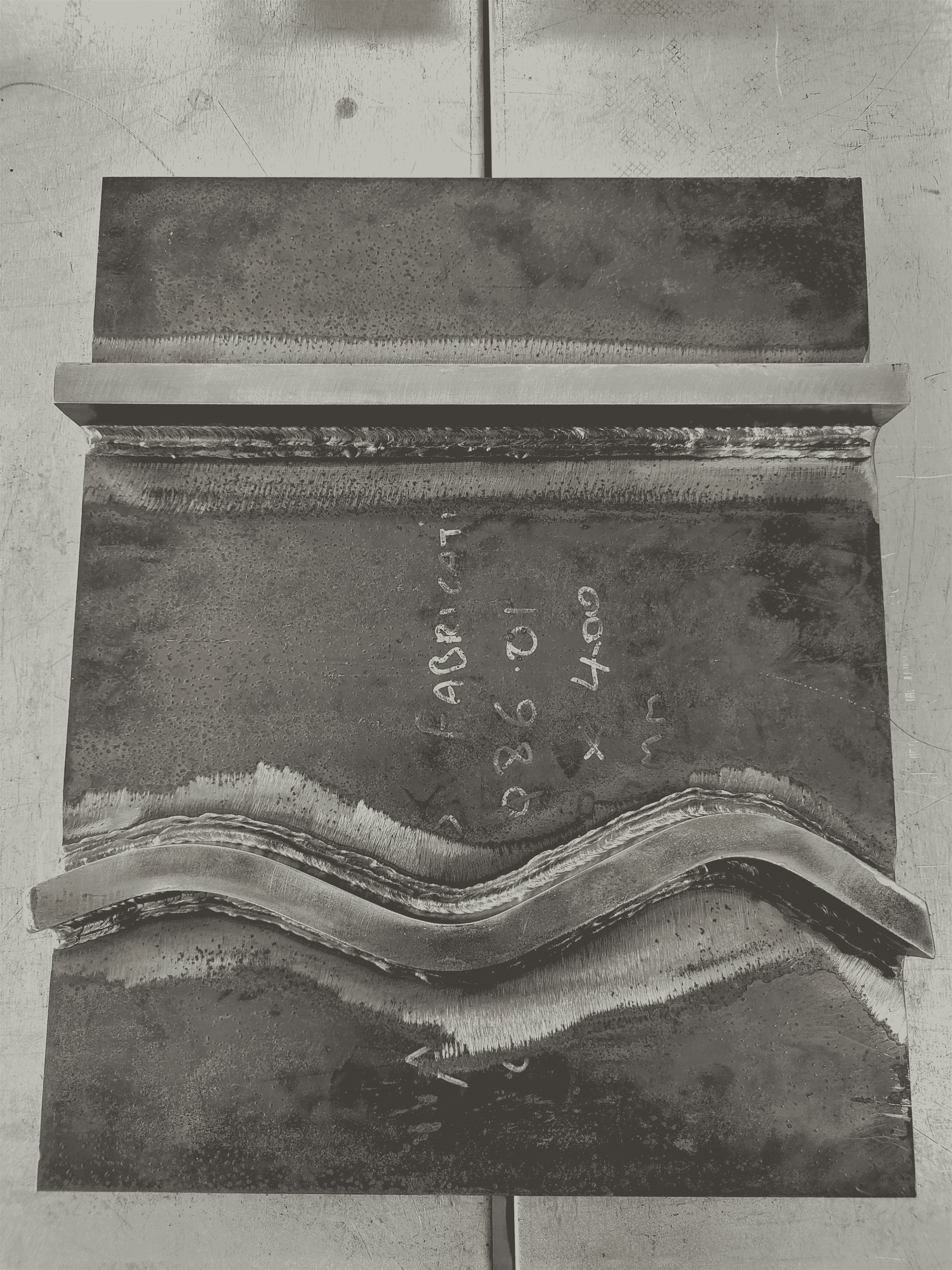Artificial Intelligence for NDT Scanning of Unknown Geometries using Collaborative Robot
By Calum Hoyle
Background
Industry has indicated that deployable automated techniques are required for in-service inspections and at manufacture. The drive toward industry 4.0 requires that digital automated systems are developed to provide feedback to design and manufacture and to enable the creation of digital twins. In addition, industry wants to leverage the power of AI to decrease set up times and ensure good data quality.
Work at TWI Wales has established that conventional, industrial robots can be used for Non-Destructive Testing (NDT) inspections of large, complex structures. The associated CAD drawing is used to develop the robot path planning. However, industrial robots require extensive path planning in order to be able to scan complex part geometries. In many industrial use cases, the geometry of the part to be inspected can vary from the CAD data due to distortion during processing, e.g. in the case of composite material, their geometry typically changes when being released from the mould. This causes difficulties during the path planning phase. Additionally, in many cases CAD data is not available for legacy components.
The other problem is that the robots are restrained to work within safety enclosures to avoid human harm. It is not practical for a quick turnaround of inspected components when the component has to be locked in a secured cage with the robots. If the CAD data used in the path planning is different to the actual component, then it is necessary for the operator to be in the cage and step through the scan path plan interactively with the robot in order to verify the end effector will not collide with the part and if necessary manually adjust the robot path.
All these limitations can be potentially overcome through the deployment of collaborative robots known as Cobots and the application of AI. Cobots are the newest generation of robots and they are lightweight and contain sensitive force/torque sensors to detect collisions. These machines can work alongside humans to automate tedious tasks with minimal manual programming. There is not a requirement to deploy a Cobot in a cage.
Artificial Intelligence (AI) leverages computers and machines to mimic problem-solving and decision-making capability. It has developed substantially within the last decade and is routinely used for pattern recognition tasks such as image classifications and human-machine interface tasks such as speech recognition. However, AI cannot be effective if there is in adequate training data available to support the machine learning.
This project provides an investigation on how artificial intelligence could be used in conjunction with ultrasonic sensors and cooperative robots to perform NDT of unknown and complex weld geometries. The proposed use of force/torque sensors means that the robot can detect when a probe touches a surface unlike the water jet coupling robotic systems currently implemented in industry which do not use force/torque sensors. The feedback from these sensors is able to measure forces and torque moments in three dimensions, which allows the robot to control both position and orientation. This data can be utilised to follow a surface, which means that prior path planning is no longer needed. Additionally, NDT inspections require a probe to be positioned to cover the inspection area (for example the Heat Affected Zone). This an area where AI and Computer Vision can offer some support by monitoring any deviations in the probe position and orientation.
Key Findings
- Scanning of straight welds – robot follows the weld geometry based on ultrasound response
- Scanning of curved welds - robot follows the weld geometry based on ultrasound response
 Curved weld
Curved weld